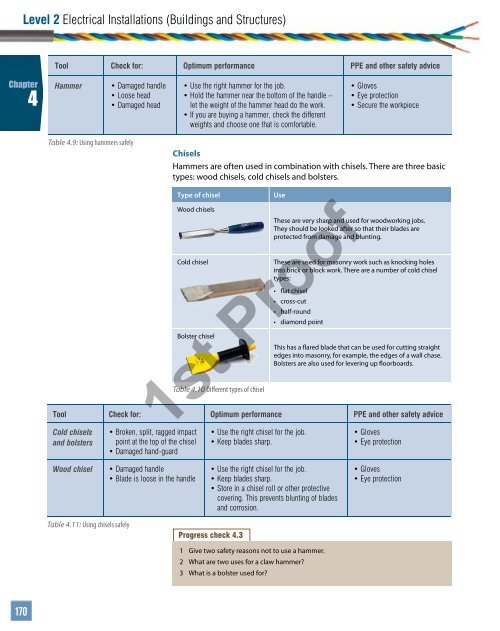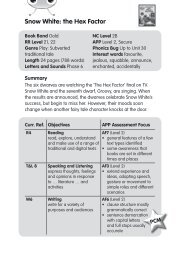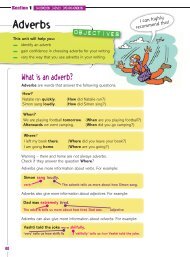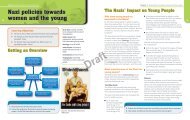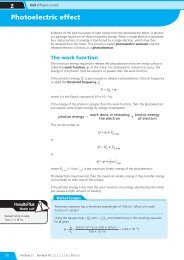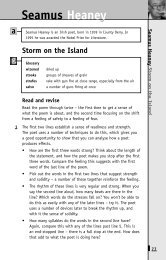INSTALLATION WIRING SYSTEMS ENCLOSURES - Pearson Schools
INSTALLATION WIRING SYSTEMS ENCLOSURES - Pearson Schools
INSTALLATION WIRING SYSTEMS ENCLOSURES - Pearson Schools
You also want an ePaper? Increase the reach of your titles
YUMPU automatically turns print PDFs into web optimized ePapers that Google loves.
Level 2 Electrical Installations (Buildings and Structures)<br />
Tool Check for: Optimum performance PPE and other safety advice<br />
Chapter<br />
4<br />
Hammer<br />
• Damaged handle<br />
• Loose head<br />
• Damaged head<br />
• Use the right hammer for the job.<br />
• Hold the hammer near the bottom of the handle –<br />
let the weight of the hammer head do the work.<br />
• If you are buying a hammer, check the different<br />
weights and choose one that is comfortable.<br />
• Gloves<br />
• Eye protection<br />
• Secure the workpiece<br />
Table 4.9: Using hammers safely<br />
Chisels<br />
Hammers are often used in combination with chisels. There are three basic<br />
types: wood chisels, cold chisels and bolsters.<br />
Type of chisel<br />
Wood chisels<br />
Cold chisel<br />
Bolster chisel<br />
Table 4.10 Different types of chisel<br />
Use<br />
These are very sharp and used for woodworking jobs.<br />
They should be looked after so that their blades are<br />
protected from damage and blunting.<br />
These are used for masonry work such as knocking holes<br />
into brick or block work. There are a number of cold chisel<br />
types:<br />
• flat chisel<br />
• cross-cut<br />
• half-round<br />
• diamond point<br />
This has a flared blade that can be used for cutting straight<br />
edges into masonry, for example, the edges of a wall chase.<br />
Bolsters are also used for levering up floorboards.<br />
Tool Check for: Optimum performance PPE and other safety advice<br />
Cold chisels<br />
and bolsters<br />
• Broken, split, ragged impact<br />
point at the top of the chisel<br />
• Damaged hand-guard<br />
1st Proof<br />
• Use the right chisel for the job.<br />
• Keep blades sharp.<br />
• Gloves<br />
• Eye protection<br />
Wood chisel<br />
• Damaged handle<br />
• Blade is loose in the handle<br />
• Use the right chisel for the job.<br />
• Keep blades sharp.<br />
• Store in a chisel roll or other protective<br />
covering. This prevents blunting of blades<br />
and corrosion.<br />
• Gloves<br />
• Eye protection<br />
Table 4.11: Using chisels safely<br />
Progress check 4.3<br />
1 Give two safety reasons not to use a hammer.<br />
2 What are two uses for a claw hammer?<br />
3 What is a bolster used for?<br />
170


